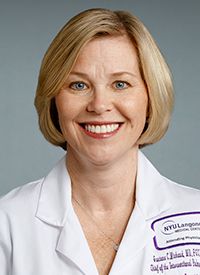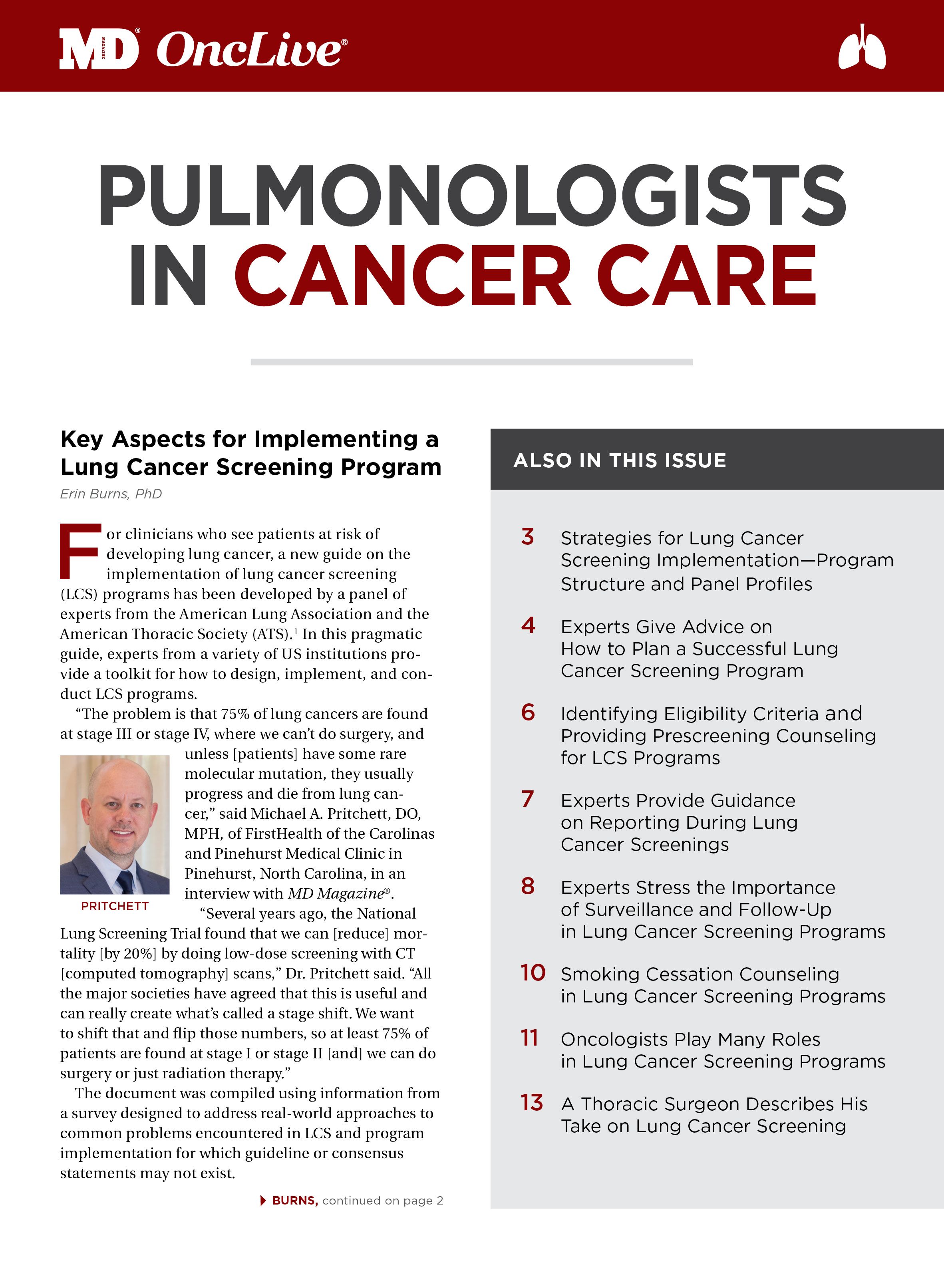Oncologists Play Many Roles in Lung Cancer Screening Programs
The role of the oncologist is essential to the design, operation, development and associate research of lung cancer screening programs.
Gaetane C. Michaud, MD

Gaetane C. Michaud, MD
The role of the oncologist is essential to the design, operation, development and associate research of lung cancer screening (LCS) programs. The creation of the new implementation guide published by the American Lung Association and the American Thoracic Society1 also featured an integral role for oncologists. As with real-world implementation, oncologists' roles in creating the guideline varied by program structure and governance, with differences typically stemming from preexisting institutional characteristics.
“When making the implementation guideline, one of the things we did initially was talk about what our different programs look like and how they function,” Gaetane C. Michaud, MD, a guideline expert panelist and section chief of the Division of Interventional Pulmonology at NYU Langone Health in New York, said in an interview with MD Magazine®. “What we realized is that there are some similarities, but there are an awful lot of differences. There’s not a one-size-fits-all answer.”
In decentralized and hybrid programs, referring providers maintain responsibility for some aspects of patient care related to LCS, whereas centralized programs encompass all aspects, from patient recruitment to treatment. Regardless of structure, referring providers should anticipate continued communication from an LCS program through which clinician responsibilities are clearly defined.
At inception, oncologists are often involved in program design, taking into consideration institutional structure, personnel capabilities, and patient culture.
Michaud explained that knowledge of culture is particularly important to program success: “Whether [one is] working in downtown Manhattan or working in Winthrop on Long Island or working in Brooklyn, each [environment] has a very different patient population,” she said. “It has a different culture, and I think that you have to respect the culture to be able to truly implement a program successfully.”
Following design, oncologists often participate in program governance. Some programs are governed by medical or radiation oncology departments, whereas others are led by pulmonology, radiology, pathology, or thoracic surgery departments, often in multidisciplinary combinations.
During operations, LCS programs depend on oncologists to participate in regular multidisciplinary meetings and tumor advisory boards, the latter of which are needed to evaluate nodules at high risk of malignancy. Frequency of interactions between oncologists and other clinicians depends on program structure.
For Dr. Michaud, direct communication with an oncologist is routine. “I work as part of a multidisciplinary lung cancer team, so I work very closely with the director of the cancer center, who also happens to be a lung oncologist,” she said. “I have a pretty low threshold to have discussions with him.”
The experience may differ for other clinicians, particularly off-site primary care providers, who are more likely to communicate via electronic medical records.
Oncologists are essential not only for daily operations but also for future program development, which is inherently tied to research. Although the benefits of LCS programs are becoming widely accepted, debate continues regarding optimal implementation.2 In this arena, oncologists play a critical research role—specifically, in studies that look for associations between biomarkers and patient risk profiles.3,4
“Our oncologists are very much involved with our research component,” Dr. Michaud said, referring to the LCS program at NYU. “We are taking blood samples from our patients, and we are actually doing molecular analyses and trying to determine phenotypes and profiles of patients, even within the screening population.…We’re trying to figure out who is at higher risk and who is at lower risk with respect to these nodules that we’re identifying.”
With help from oncologists, more accurate risk profiles could greatly improve eligibility criteria, which currently are based on smoking history and age. The parameters come from the National Lung Screening Trial and are upheld by CMS. Patient eligibility is typically necessary for payer coverage, leaving some high-risk patients excluded from LCS programs.
For example, Dr. Michaud described the situation of an ex-smoker who wished to participate in the LCS program at NYU. The patient had an identical twin sister with an aggressive form of lung cancer, suggesting a possible shared genetic risk factor; however, the woman was ineligible. She had quit smoking 17 years prior to presentation—2 years too late.
“She technically didn’t meet criteria,” Dr. Michaud said. “And in New York City, one of the big things that’s coming out is the risk from 9/11 exposure. I’ve been seeing a lot of patients that have had significant exposure to Ground Zero who are developing really nasty cancers, very early without a lot of cigarette smoke. What do we do about all these additional populations that are high risk but that don’t actually meet the criteria? I think that in the future, we’re going to have to understand a whole lot more about when we screen, how we start screening, and who we screen. I think that a lot of this profiling is going to make a big difference.”
References
- Thomson CC, McKee A, Borondy-Kitts A, et al; American Thoracic Society, American Lung Association. Lung cancer screening implementation guide. lung.org/assets/documents/lung-cancer/implementation-guide-for-lung. pdf. Accessed November 6, 2018.
- Bach P, Brawley OW, Silvestri GA. Low-dose CT for lung cancer screening. Lancet Oncol. 2018;19(3):e133-e134. doi: 10.1016/S1470-2045(18)30117-7.
- Li Y, Xiao X, Han Y, et al. Genome-wide interaction study of smoking behavior and non-small cell lung cancer risk in Caucasian population. Carcinogenesis. 2018;39(3):336-346. doi: 10.1093/carcin/bgx113.
- Sharma D, Newman TG, Aronow WS. Lung cancer screening: history, current perspectives, and future directions. Arch Med Sci. 2015;11(5): 1033-1043.




